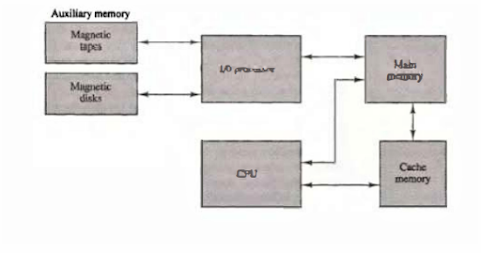Hierarchy List
- Registers
- L1 Cache
- L2 Cache
- Main memory
- Disk cache
- Disk
- Optical
- Tape
Capacity, cost and speed of different types of memory play a vital role while designing a memory system for computers.
If the memory has larger capacity, more application will get space to run smoothly. It's better to have fastest memory as far as possible to achieve a greater performance.
Moreover for the dialy usage system, the cost should be reasonable. There are three characteristics cost, capacity and access time which as be consider.
One cannot achieve all these quantities in same memory module because If capacity increases then access time increases (slower) and due to which cost per bit decreases. If access time decreases (faster), capacity decreases and due to which cost per bit increases. The designer tries to increase capacity because cost per bit decreases and the more application program can be accommodated. But at the same time, access time increases and hence decreases the performance. So the best idea will be to use memory hierarchy.
Memory Hierarchy is to obtain the highest possible access speed while minimizing the total cost of the memory system. Not all accumulated information is needed by the CPU at the same time. Therefore, it is more economical to use low-cost storage devices to serve as a backup for storing the information that is not currently used by CPU.
The memory unit that directly communicate with CPU is called the main memory. Devices that provide backup storage are called auxiliary memory. The memory hierarchy system consists of all storage devices used in a computer system from the slow by high-capacity auxiliary memory to a relatively faster main memory, to an even smaller and faster cache memory.
The main memory occupies a central position by being able to communicate directly with the CPU and with auxiliary memory devices through an I/O processor.
A special memory called cache is used to increase the speed of processing by making current programs and data available to the CPU.
CPU logic is usually faster than main memory access time, with the result that processing speed is limited primarily by the speed of main memory The cache is used for storing segments of programs currently being executed in the CPU and temporary data frequently needed in the present calculations.
As we go down in the hierarchy
- Cost per bit decreases
- Capacity of memory increases
- Access time increases
- Frequency of access of memory by processor also decreases.


0 comments :
Post a Comment
Note: only a member of this blog may post a comment.